Picking up from the astonishing first couple of outcrops we saw of strained Seine Group metaconglomerate from the boundary between the Wabigoon and Quetico sub-provinces of the Superior Craton, our group moved on down the road. It was lovely clear fall weather near Fort Frances, and shockingly warm.
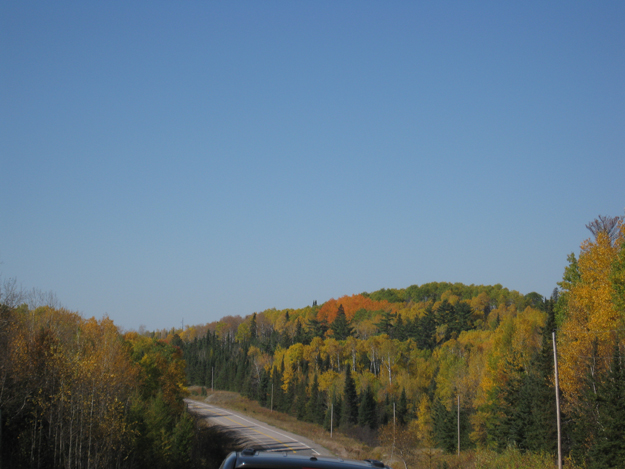
Our third stop of the morning was a lunch stop atop a great “pavement” outcrop of the same strained metaconglomerate, showing different strain responses among the different clasts. The “pavement” was beveled off during the Pleistocene “ice ages,” when a massive continental ice sheet covered this part of Canada, flowing slowly downhill into the United States. Here’s a look at the outcrop:
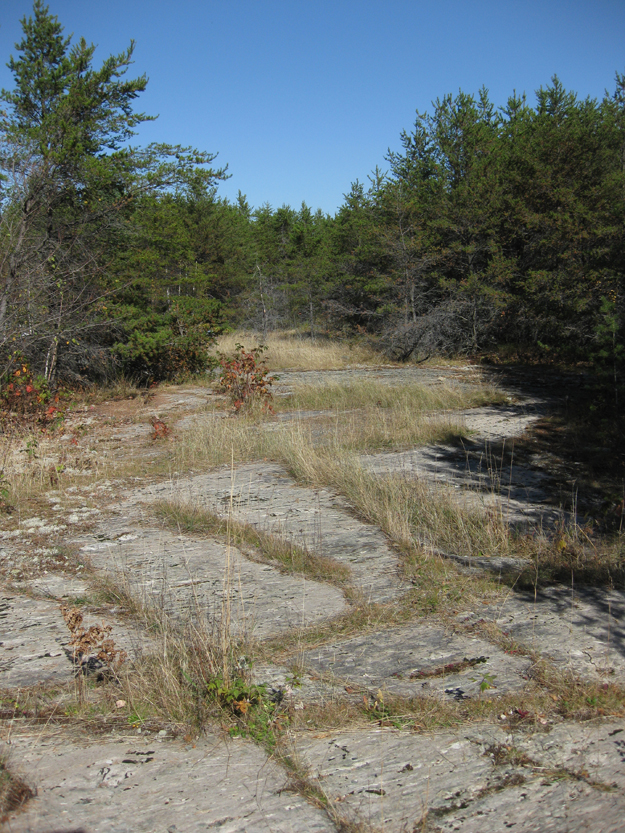
We could wander around over these “pavements” through gateways formed by coniferous trees, looking down at some extraordinary rocks:
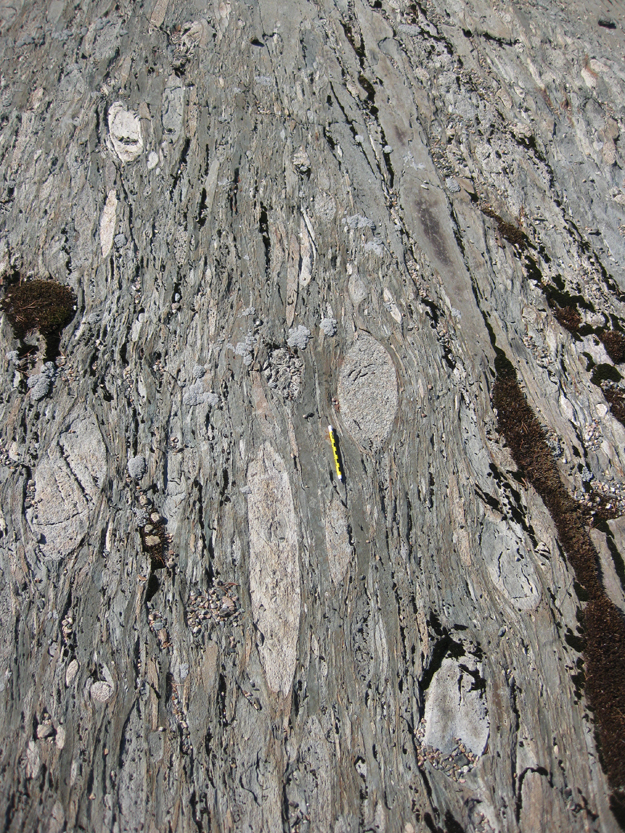
Dextral kinematics were very consistent. In the following series of photos, notice how the rigid clasts have developed asymmetric “wings” on either side. The foliation “comes in” to the clast at one level (on the lower left), then “leaves” at another level on the opposite side of the clast (upper right). This is consistent with dextral (or “right-lateral,” or “top to the right”) shearing during deformation:
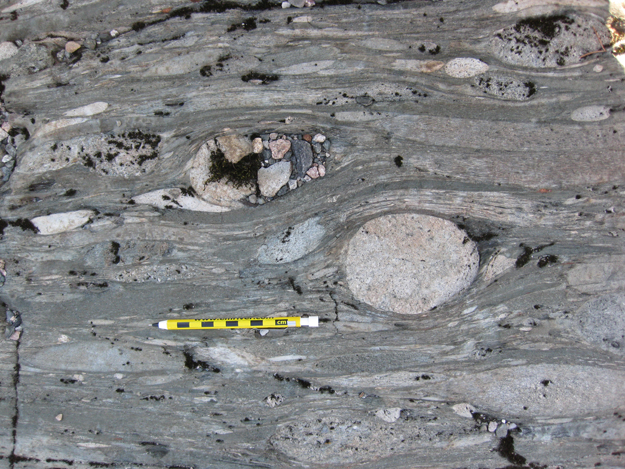
Here’s what a structural geologist sees:
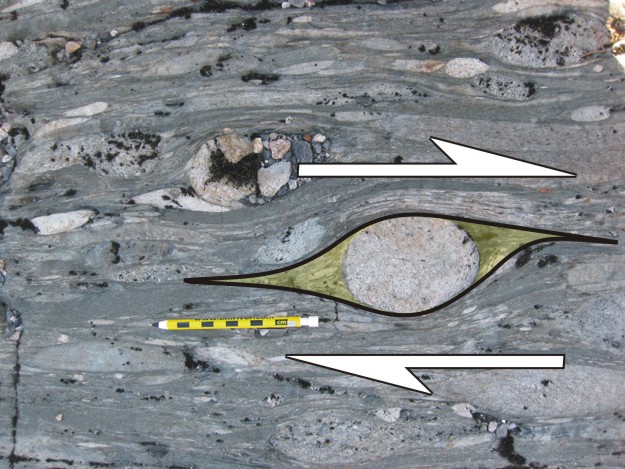
Check out the following examples of similarly dextrally asymmetric clasts…
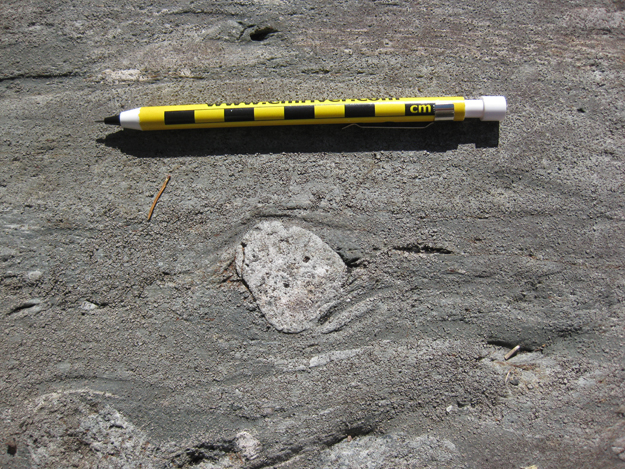
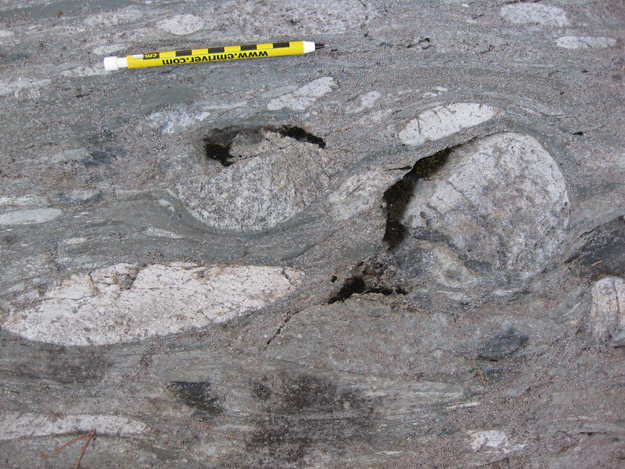

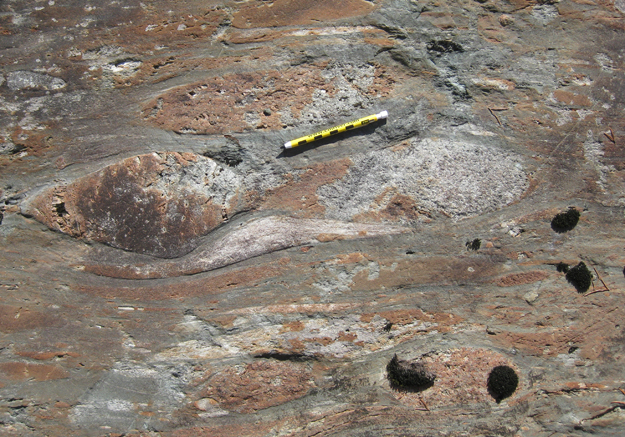
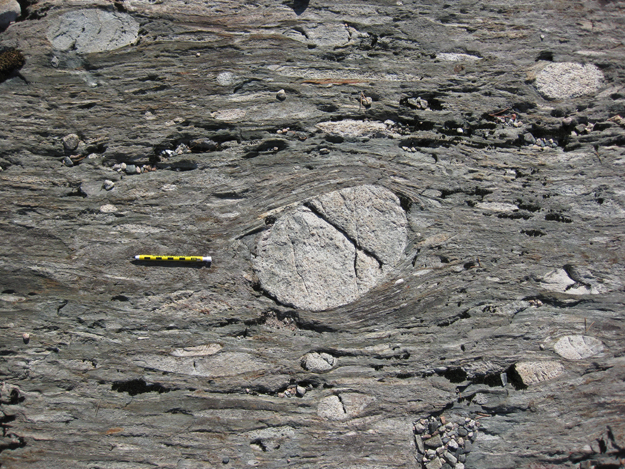
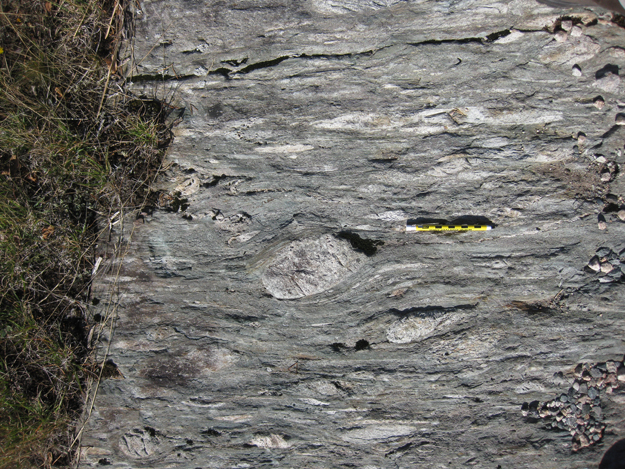
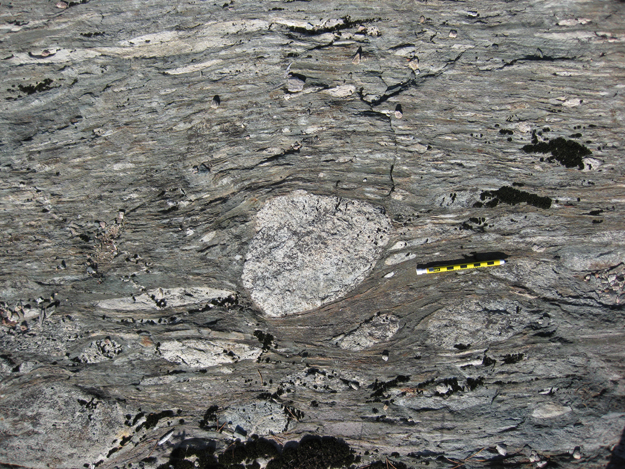
As with the first outcrops, we could detect primary structures like bedding in a few locations:
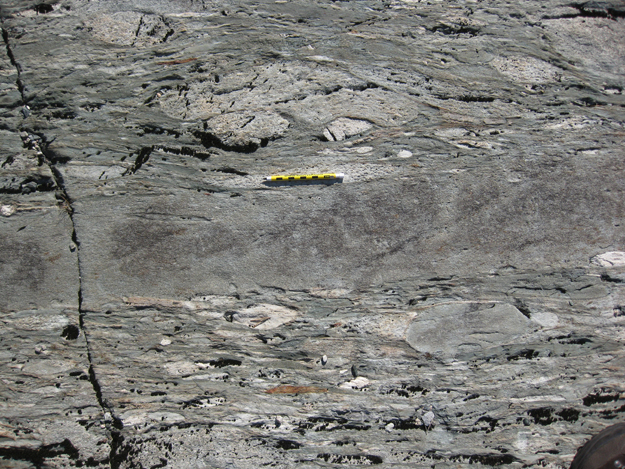
Point of historical interest: it was elsewhere in the Seine group, in a dominantly sandy facies, where the use of cross-bedding as geopetal (‘way-up’) indicators was first employed to map out regional folds. In 1911, A.C. Lawson (he of the 1906 San Francisco earthquake “Lawson Report“) made the first apparent use of observed reversals in stratigraphic facing (basically, cross-bedding oriented in different directions in different outcrops of Seine sandstone) to define the traces of Precambrian folds. I searched around for some of these cross-beds, but these strata were too chunky to retain any that I recognized.
Yesterday’s post featured the brittle response of some rigid clasts to the same stresses that made their neighbors smear out. Here’s an example of cracks perpendicular to foliation (parallel to the pencil):
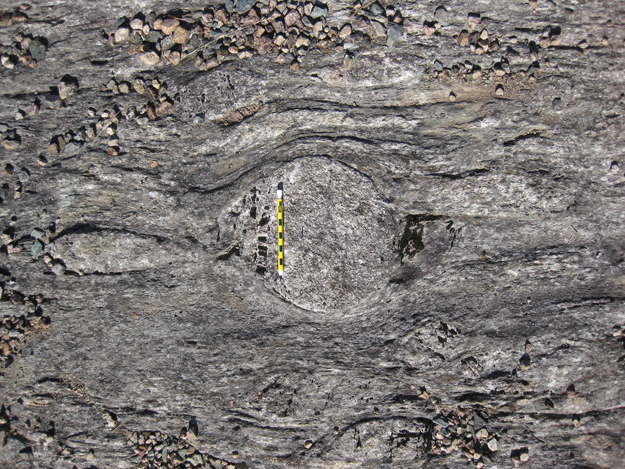
…And here’s an example of a conjugate set of fractures (highlighted by moss growth):
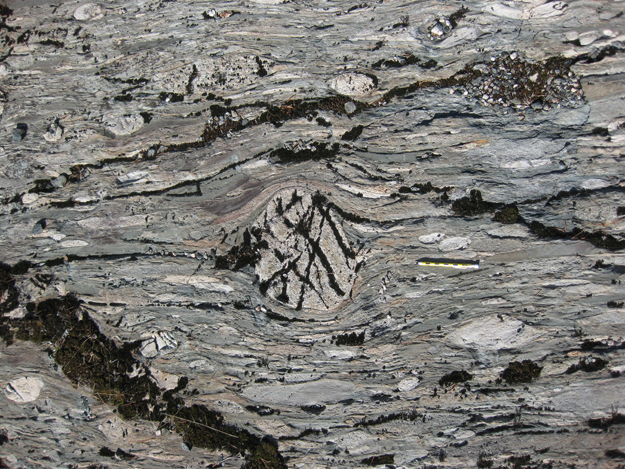
A few small folded quartz veins were spotted too:
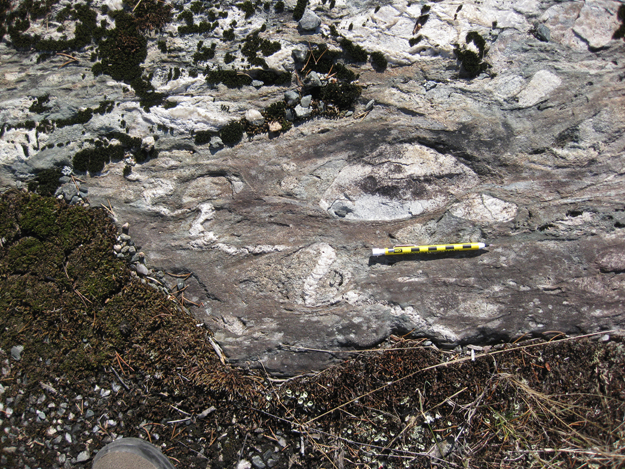
Like the clasts, the asymmetry of these folds suggests (but does not guarantee) dextral shearing:
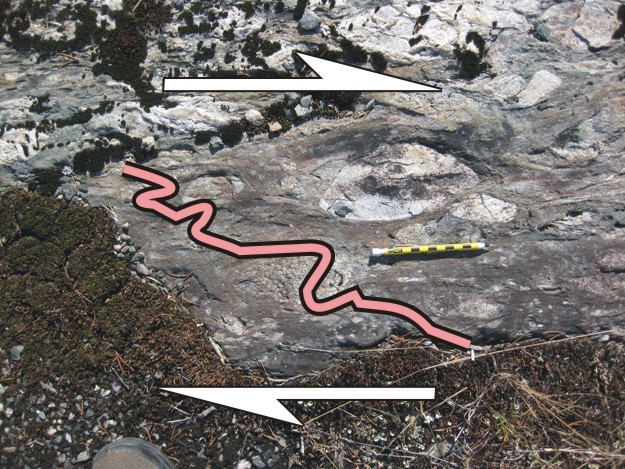
If the shearing were sinistral (“top to the left”) instead, then a vein in this orientation would be thinned and perhaps boudinaged rather than being shortened through folding.

Excellent field photos for teaching students of Geology. I look forward for the for more.